JAIPUR
.jpg) Its the only place in INDIA known as "PINK CITY " .Situated in Rajasthan the Jaipur is one of the most important cities in India from the point of tourism.Known as the Pink City because of the colour of the stone used exclusively in the walled city, Jaipur's bazaars sell embroidered leather shoes, blue pottery, tie and dye scarves and other exotic wares.Jaipur is a land of natural beauty and great history.It belongs to the tourist Golden Triangle of Delhi, Jaipur and Agra.The Royal city of Jaipur celebrates numerous festivals with full zeal all round the year. There are many Festivals in Jaipur. These festivals and fairs form an inseparable part of Jaipur's identity. The city attracts thousands of tourist from all over the world. Jaipur came into prominence after Maharaja Sawai Jai Singh II established this beautiful city in 1727. Jaipur has been the cradle of many ruling dynasties and was an important cultural hub of that period. Now Jaipur is growing fast and various development projects are being undertaken by the government and private enterprises. The town planning and infrastructure development in Jaipur is quite above the mark relative to many other Indian cities.
Its the only place in INDIA known as "PINK CITY " .Situated in Rajasthan the Jaipur is one of the most important cities in India from the point of tourism.Known as the Pink City because of the colour of the stone used exclusively in the walled city, Jaipur's bazaars sell embroidered leather shoes, blue pottery, tie and dye scarves and other exotic wares.Jaipur is a land of natural beauty and great history.It belongs to the tourist Golden Triangle of Delhi, Jaipur and Agra.The Royal city of Jaipur celebrates numerous festivals with full zeal all round the year. There are many Festivals in Jaipur. These festivals and fairs form an inseparable part of Jaipur's identity. The city attracts thousands of tourist from all over the world. Jaipur came into prominence after Maharaja Sawai Jai Singh II established this beautiful city in 1727. Jaipur has been the cradle of many ruling dynasties and was an important cultural hub of that period. Now Jaipur is growing fast and various development projects are being undertaken by the government and private enterprises. The town planning and infrastructure development in Jaipur is quite above the mark relative to many other Indian cities.TOURIST ATTRACTION
FORTS
*AMBER FORT ( ☎ +91 14 1253 0293.08:00-17:30.):-
 The name has nothing to do with the rather pretty pastel yellow colour; instead, the fort is named after the town of Amber, in turn named after the goddess Amba. The main sights within the fort include the Sheesh Mahal, adorned with thousands on thousands of mirror tiles on the walls and ceiling. The fort/palace grounds are sprawling and the information panels (hindi/english) are somewhat limited, so it might be worth getting an audio guide or a real guide. It's a bit of a hike up from the town, and the touristy thing to do is to hitch an elephant ride to the top (in order to get an elephant it is better to to arrive there in the morning, otherwise at midday the elephants are over. But the road that elephants pass is not so long). The elephant riding costs 900 (fixed government price) as of July 5th 2011.Also see the Amber Light Show below. Rs 25/10 for Indian/student and Rs 200/100 for foreigner/student.
The name has nothing to do with the rather pretty pastel yellow colour; instead, the fort is named after the town of Amber, in turn named after the goddess Amba. The main sights within the fort include the Sheesh Mahal, adorned with thousands on thousands of mirror tiles on the walls and ceiling. The fort/palace grounds are sprawling and the information panels (hindi/english) are somewhat limited, so it might be worth getting an audio guide or a real guide. It's a bit of a hike up from the town, and the touristy thing to do is to hitch an elephant ride to the top (in order to get an elephant it is better to to arrive there in the morning, otherwise at midday the elephants are over. But the road that elephants pass is not so long). The elephant riding costs 900 (fixed government price) as of July 5th 2011.Also see the Amber Light Show below. Rs 25/10 for Indian/student and Rs 200/100 for foreigner/student. * JAIGARH FORT(☎ +91 14 1267 1848. 09:00-16:30. ):-
 A 1 km walk uphill from '''Amber Fort'''. Never conquered in battle, this was considered the strongest of the three forts in the area. It is best known as the site of the world's largest cannon, the Jaivana, which was test-fired only once — according to legend, despite using only the half the design amount of gunpowder, the cannonball flew 35 km! A better reason to visit the fort, though, are the scenic gardens at the other end and the spectacular views over the Amber Fort and the hills around. The remains of the foundry where the Jaivana (and many more) were cast are also in the fort grounds.
A 1 km walk uphill from '''Amber Fort'''. Never conquered in battle, this was considered the strongest of the three forts in the area. It is best known as the site of the world's largest cannon, the Jaivana, which was test-fired only once — according to legend, despite using only the half the design amount of gunpowder, the cannonball flew 35 km! A better reason to visit the fort, though, are the scenic gardens at the other end and the spectacular views over the Amber Fort and the hills around. The remains of the foundry where the Jaivana (and many more) were cast are also in the fort grounds.*NAHARGARH FORT( ☎ +91 14 1518 2957.):-
 The smallest of the three forts, notable primarily for excellent views over Man Sagar lake and the vast sprawl of Jaipur. The fort also houses the (relatively) compact Madhavendra Bhawan palace, although its former splendour is fading fast under a new layer of graffiti and pigeon droppings. Portions of the movie Rang De Basanti were shot at this fort. To go the area where the "Pathshala" song was shot, take a left turn as soon as you enter the fort.
The smallest of the three forts, notable primarily for excellent views over Man Sagar lake and the vast sprawl of Jaipur. The fort also houses the (relatively) compact Madhavendra Bhawan palace, although its former splendour is fading fast under a new layer of graffiti and pigeon droppings. Portions of the movie Rang De Basanti were shot at this fort. To go the area where the "Pathshala" song was shot, take a left turn as soon as you enter the fort.Palaces[edit]
- Jal Mahal (Water Palace), (On the way to Amber Fort). A Rajput style architectured palace sits in the center of the Man Sagar lake. The lake is often dry in the winter, but summer monsoons frequently turn it into a beautiful lake filled with water hyacinths. Free on the 18th of May, as well as the Observatory and wind palace. edit
- City Palace, (Inside the old city, close to New Gate and Hawa Mahal). An imposing blend of traditional Rajput and Mughal architecture. It is a vast palace complex occupying nearly one-seventh of the Pink City. It was originally built by Maharaja Jai Singh II. The complex is divided into a series of courtyards, sprawling gardens and buildings. It is home to several palatial structures like the Chandra Mahal, (home to present Maharajah of Jaipur),Mubarak Mahal (housing a textile museum), Diwan-e-Khas (or Hall of Private audience housing the two largest silver vessels in the world, which are duly mentioned in the Guinness book), the Diwan-e-Aam ( or Hall of Public Audience) and the gateway Ridhi Sidhi Pol (with four small doorways decorated with motifs depicting the four seasons). Rs 300, which includes also a 1-week entrance to Jaigarh Fort. edit
Temples[edit]
- Govind Devji Temple - For Vaishnavites, particularly followers of Lord Krishna, this is the most important temple in the world after Vrindavan. Lord Krishna presiding in the temple were brought to Jaipur from Vrindavan during Mughal rein. According to popular legend, Lord Krishna's idol in the temple looks exactly like Krishna's form while his incarnation of Earth. It is located at Jainiwas Gardens, Jalebi Chowk, in the same campus as City Palace.

- Moti Doongari temple is located in the center of Jaipur city. This Temple is the main center of religion for Jaipur people. Moti Dungri is basically a small hill, which means Pearl Hill. There is a Temple and a Palace on this hill. Moti Dungri temple is dedicated to Lord Ganesha and it is said that at the time of building this city, this temple was constructed first to protect the city.
- Lakshmi Narayan Temple (aka The Marble Temple) (Birla Temple), (below the well known Moti Dungri fort). is a relatively new temple made of white marble with beautiful carvings. It covers a vast area in Jaipur city and is built in a contemporary manner. Birla Temple is completely constructed with finest high quality white marbles.sachish mittal is also know as edit
- Akshardham Temple (at Vaishali Nagar)
- Jain Mandir (Shivdas Pura) 15-16 km from Jaipur, is a Jain temple in Shivdaspura and is well known as “Bara Padampura”. This temple comes under district Jaipur. Temple is a unique place of miracles and is famous in north India for its very beautiful statue of God Padamprabhu (The 6th Teerthankar for Jain’s). God is sitting in a crossed leg seating posture. Height of the statue is 2 ft 4" and statue is made of pure white stone. Statue was appeared while digging for foundation of a house.
- Galtaji is an ancient Hindu pilgrimage site situated 10 km from Jaipur on Jaipur-Agra highway near Sisodia Rani Garden. The main temple here is temple of Galtaji in constructed in pink stone. The temple has a number of pavilions with rounded roofs, exquisitely carved pillars and painted walls. The temple is surrounded by natural springs and reservoirs that are considered holy .There are also seven tanks or kunds here.

- Galwh Bagh (aka The Monkey Temple) and Suriya Mandir (aka The Sun Temple) are located on the Eastern edge of the city. Both locals and tourists come here to feed the surprisingly tame monkeys, use the temples, and enjoy the views. You can climb to the top of the hill and then down into the valley to see the Monkey Temple, all the while enjoying the company of countless monkeys, goats, and other animals. At the top of the hill, you turn right to reach the Sun Temple for one of the best views of the city, especially at sunset


Monuments[edit]
*Jantar Mantar, (very close to the City Palace.), ☎ +91-141-261-0494, . 9:00 a.m-4:30 p.m.. This UNESCO world heritage site is the largest of five astronomical observatories build by Maharaja Jai Singh during the period 1727-1734 in north India. The observatory consists of fourteen major geometric devices (or yantras in Hindi) for measuring time, predicting eclipses, tracking stars in their orbits, ascertaining the declinations of planets and determining the celestial altitudes etc. There is signage providing elaborate explanations for the use of each device, and guides can be hired to provide much the same information in a more digestible format.The observatory, the water and the wind palace are free on the 18th of May.
*Hawa Mahal (Palace of Breeze). Built in 1799 by Maharaja Sawai Singh as part of City Palace. It was an extension of the Zenana(women) chamber. It's purpose was to allow royal ladies to observe everyday life in the street below without being seen. It is a five storey high red sandstone structure complete with over 950 windows. The breeze (or hawa in Hindi) circulates through these windows giving the palace its name.
 *Iswari Minar Swarga Sal, Chandpol Bazaar near City Palace (Look for the big tall tower near Tripolia Gate. The entrance is not from the main street, but is around the back of the shops. You can get there from the alley that’s 50m west of the minaret along Chandpol Bazaar, there's also an entrance near the City Palace, which is 50m west of Tripolia Gate and 200m east of the minaret.). There is an alternative to the minor that's open 24/7. Just across the other side of the road (Chandpol Bazaar) from the minaret is a shopping complex with stairs up to a rooftop area where you can get basically the same view as from the minar. To get there, go through the arched gateway almost opposite the minar, then as soon as you get to the courtyard, look to the left for a metal spiral staircase and keep climbing until you reach the roof, walk around the corder to the next set of stair and go up another floor until you know you can't go any higher.
*Iswari Minar Swarga Sal, Chandpol Bazaar near City Palace (Look for the big tall tower near Tripolia Gate. The entrance is not from the main street, but is around the back of the shops. You can get there from the alley that’s 50m west of the minaret along Chandpol Bazaar, there's also an entrance near the City Palace, which is 50m west of Tripolia Gate and 200m east of the minaret.). There is an alternative to the minor that's open 24/7. Just across the other side of the road (Chandpol Bazaar) from the minaret is a shopping complex with stairs up to a rooftop area where you can get basically the same view as from the minar. To get there, go through the arched gateway almost opposite the minar, then as soon as you get to the courtyard, look to the left for a metal spiral staircase and keep climbing until you reach the roof, walk around the corder to the next set of stair and go up another floor until you know you can't go any higher.
*Gatore Ki Chattriyan, (In the walled city area named Brahmpuri, the foothills of Nahargarh Fort).This is a royal cremation site of the royal rulers of Jaipur. It does not get many visitors, making it an oasis of calm and peacefulness in the frenetic city center. Many beautiful architectural details are carved into these buildings. Very worthwhile to visit.
Gardens[edit]
- Ram Niwas Garden
- Zoological Garden
- Sisodia Rani Palace and Garden
- Vidyadhar Garden
- Central Park (Entrance near Statue Circle)
Museums[edit]
- Anokhi Museum of Hand Printing, (Kheri Gate, Amber), ☎ +91 141 2530226, [9]. A beautiful clean museum dedicated to the traditional art of hand block printing textiles, this museum is housed in a recently restored heritage haveli tucked into the back streets of old Amber. Small cafe, clean toilets, small shop, friendly staff & a printer & block carver demonstrating their crafts every day. edit

- Central Museum (Albert Hall). Included in the 5-monument ''Composite Ticket''. edit
Activities and entertainment[edit]
- Visit the bazaar in the city centre. An evening visit is a complete assault on the senses - the colours, the sights, the sounds and the smells. There are different specialist zones, whether it's food, flowers, textiles, carved statues or plumbing. While you should always be wary (read up about gem scams thoroughly before arriving and be particularly cautious if approached by guys slightly too eager to hang out and go for drinks etc, as this can often be the beginnings of a very widespread scam which at best will waste your time and at worst cost you thousands), be sure not to completely close yourself out to the locals as one of the highlights of Rajasthan is the chance to interact with the friendly people. It is not unheard of to be invited to homes for dinner, parties, and even weddings as many middle class young people are curious of foreigners and genuinely very hospitable as is the open culture of the region (which you will not find so widely in Delhi/Agra).
- Amber Fort Sound and Light Show, Lower Amber Fort, ☎ +91 14 1270 9162 (sel.amber@ids.co.in). 7 PM - 8 PM. Experience the history, culture and life of Amber through this spectacular show. Amitabh Bachhan narrates the story of Rajasthani kings with a script written by Gulzar. Don't forget the mosquito repellent. The light show can be watched from outside the fort, but the sound won't be audible from there. Rs 100. edit
- Raj Mandir Theatre. The dazzling neon-lit exterior doesn't quite prepare you for the stunning art-deco-India-style interior. An experience in itself, and another "don't miss." Once known as the best movie theater in India, and still the best in Rajasthan, it offers an overwhelming experience. From the pushing, shoving, and general chaos in the ticket line, to an audience that laughs, cries, cheers, claps, and consistently talks through the entire film, the Raj Mandir provides an insight into Rajasthani culture. The movies themselves are always interesting; Masala movies are action, drama, mystery, suspense, and epics all wrapped into one single movie, teeming with dances and obligatory wet sari scenes, and unabashedly lifting generous amounts of plot devices from Western movies. The theater-goers are very friendly and genuinely curious about overseas visitors who come to the Raj. Expect to answer many questions about country of origin and movie likes and dislikes, as well as take photos of theater-goers themselves with their mobile phones. Don't be put off by "House Full" notices at the entrance. The box office opens again a nominal 45 minutes before the next performance, and there are usually tickets available. Box seats at Rs 120 go first, so it's worth going early to avoid disappointment. Shows at 6:30PM and 9:30PM. A great place to meet locals, with the nearby McDonald's as a central congregation spot.
- Nad Sadhna [nadsadhna.com]. Provides a platform to learn Indian Music (Vocal, Instrumental and Dance) from an experienced musician.

- B.M. Birla Auditorium and Convention Centre is located at the heart of Jaipur. This auditorium is spread over 9.8 acre, that includes a computer centre, interactive science museum, an information processing centre, library, a processing planetarium, eight research division, a dissemination cell and an auditorium. Auditorium has the capacity of 1350 people to seat and it is among the largest auditoriums of India. This auditorium is built up to international conference standards.
Other[edit]
- Statue circle. edit
- Ramgarh. edit
|
|
| ||||||||||||||||||
|
|
| ||||||||||||||||||
HOTELS:-
5 Star Deluxe Hotels in Jaipur
5 Star Hotels in Jaipur
4 Star Hotels in Jaipur
3 Star Hotels in Jaipur
Heritage Hotels in Jaipur
5 Star Hotels in Jaipur
4 Star Hotels in Jaipur
3 Star Hotels in Jaipur
Heritage Hotels in Jaipur
CLIMATE:-
| Climate: | Hot Semi-Arid Type |
| Summer temperature : | Minimum: 25° C, Maximum: 45° C |
| Winter temperature: | Minimum: 5° C, Maximum: 22° C |
| Annual rainfall: | 650 mm |
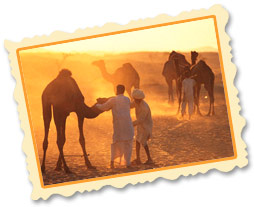 Jaipur, the Pink City is the capital and the largest city of Rajasthan. With fascinating forts, magnificent palaces; this place reflects a glorious and royal past. The flamboyance of turbans, eye catchy architecture, rich culture, textiles and jewellery attract a lot of national and international tourists. The brilliance of this city can only be experienced by witnessing it. Being the city of colours, fairs and fests, this wonderful city with a royal touch to it invites a huge crowd. Some of the prominent festivals that must be enjoyed, if you plan on visiting this place, are the Elephant festival, Teej festival, Kite festival, Gangaur festival, Camel festival. One should try and visit this land during the months of October to March, as the temperature varies between 22oC and 5oC at that time. This pleasant weather ensures that you witness the royal city of Rajasthan with complete delight.
Jaipur, the Pink City is the capital and the largest city of Rajasthan. With fascinating forts, magnificent palaces; this place reflects a glorious and royal past. The flamboyance of turbans, eye catchy architecture, rich culture, textiles and jewellery attract a lot of national and international tourists. The brilliance of this city can only be experienced by witnessing it. Being the city of colours, fairs and fests, this wonderful city with a royal touch to it invites a huge crowd. Some of the prominent festivals that must be enjoyed, if you plan on visiting this place, are the Elephant festival, Teej festival, Kite festival, Gangaur festival, Camel festival. One should try and visit this land during the months of October to March, as the temperature varies between 22oC and 5oC at that time. This pleasant weather ensures that you witness the royal city of Rajasthan with complete delight.The weather of Jaipur is semi-arid type. Temperatures remain comparatively on the higher end all around the year. The summer season begins from April and continues till July. The temperature rises to an average of 30 oC. The city experiences monsoon showers in the months of August and September with frequent thunderstorms. Jaipur receives over 650 mm of rainfall each year. With pleasant weather in the month of October; November to February, are the months when city observe winters. The temperature ranges in between 5-15 oC during this season. There are no traces of humidity in winters but the city is dominated by the dense cover of fog in mornings and evenings. The cold waves at times lead to freezing temperature in this season. Jaipur is extremely warm during summers and cold during winters, though the nights are cooler throughout the year. The weather in summers is high on humidity and so drinking a lot of water becomes necessary in order to keep yourself fit. Even after the extremely hot summers, the monsoon season doesn't prove to be a relief either. Delay in flights due to heavy rains, disruption on roads as they are washed away are some of the problems to be experienced if you visit this place during rainy season. Also, landslides are pretty common out there in monsoon season. Therefore, the apt time to visit this richly royal city of Jaipur is in the winter season. October to March sees a great rush of travellers from India and abroad. It is indeed the ideal time for touring Jaipur and attractions nearby. This place affluent in heritage, culture and art has numerous lovely attractions that facilitate you with a refreshing experience of this enriched place.
CULTURE
Located in the eastern Rajasthan, this city of Jaipur is popular of the amazing forts and stupendous palaces. This royal town has magnificent architecture and is the first planned city of India. The buildings here are made with pink-painted sandstone which brings it the name of Pink City. With fantastic attractions all around the city, it invites tourists from all over the world. Jaipur's rich cultural heritage is displayed in the traditions, customs, lifestyle, art and architecture of this place. In fact the best understanding of Jaipur's culture can be attained through its art, music and architecture. The splendid monuments of Jaipur deserve a visit. Those huge fortresses of Mughal and Rajput reigns, the Hawa Mahal, Amber Fort, Jal Mahal aptly describe the culture of the city. Jantar Mantar of Jaipur, the largest of all five similar monuments is an observatory basically, which is indeed an architectural spectacle.
The people of this lively town are friendly and warm. Their colourful outfits and unique jewellery are the part of their culture displayed in a flamboyant way. They love to dance to the tunes of Rajasthani folk songs. Famous dances of Jaipur include Ghoomar, Chari where the dancers got to dance on a pot with a lit diya on their head. Traditional instruments like Sarangi, Ektara, and Jhalar are also played while singing folk songs. Food or the local delicacies of Jaipur also reveal the culture of the city. Jaipur's utterly delicious mangodi, papad, khichdi, buttermilk, sohan halwa have no match. Also famous for its handicrafts, Jaipur has markets flooded with handicraft items. Carved silver jewellery, kundan as well as meenakari jewellery, ivory carved sculptures, wood work and leather goods, are all so finely made that they would undoubtedly catch your eye. Known for blue pottery, miniature paintings and traditional clothes with work of bandhni, zari and zardosi, are certainly the best examples that depict rich culture of Jaipur.
Art And Crafts
 The Mughal and Rajput rulers used to invite skilled artists and craftsmen from India and abroad to display and share their abilities with the people of Jaipur. Many of them settled here leading to development of Jaipur as the haven of rich art and culture. Some of the artful talents of artisans include: Bandhani; Block printing; Stone carving and Sculpture; Tarkashi; Zari, Gota, Kinari and Zardozi; Silver Jewellery; Gems, Kundan, Meenakari and Jewellery; Miniature paintings; Blue Pottery; Ivory carving; Shellac work; Leather ware, etc.
The Mughal and Rajput rulers used to invite skilled artists and craftsmen from India and abroad to display and share their abilities with the people of Jaipur. Many of them settled here leading to development of Jaipur as the haven of rich art and culture. Some of the artful talents of artisans include: Bandhani; Block printing; Stone carving and Sculpture; Tarkashi; Zari, Gota, Kinari and Zardozi; Silver Jewellery; Gems, Kundan, Meenakari and Jewellery; Miniature paintings; Blue Pottery; Ivory carving; Shellac work; Leather ware, etc.
Performing Arts
This land of Jaipur has its own performing arts. The Jaipur Gharana for Kathak is widely popular and apparently an example of rich cultural heritage of Jaipur as far as performing arts is concerned. Tamasha is another such example.
Cuisine
 The pink city Jaipur presents to you scrumptious cuisines that are known throughout India; dishes like Dal Bati Churma, Missi Roti, and sweets like Ghevar, Feeni, Gajak, Chauguni ke laddu, Moong Thal, to name a few. Rajasthani cuisine is full of nutrition since it's made in ghee and butter; and is generally vegetarian.
The pink city Jaipur presents to you scrumptious cuisines that are known throughout India; dishes like Dal Bati Churma, Missi Roti, and sweets like Ghevar, Feeni, Gajak, Chauguni ke laddu, Moong Thal, to name a few. Rajasthani cuisine is full of nutrition since it's made in ghee and butter; and is generally vegetarian.
Fairs And Festivals
This city witnesses various fairs and festivals at different time of the year. Some of the festivals are Gangaur festival, Jaipur Literature festival, Kite festival, Teej festival, Shitla Mata Fair, Chaksu Fair, Elephant Fair, Chhat ka Mela in Amber during Navratri. The colourful city becomes even more lively and lovely.
People and Languages
The people of Jaipur are friendly and warm. The colourful outfits and ethnic jewellery they sport are the part of our culture exhibited in a beautiful way. They love to perform folk dances to the tunes of Rajasthani folk songs. The main language of Jaipur is Rajasthani. However, Marwari, Hindi and English are also spoken in the city.
The culture of Jaipur facilitates us with a holistic view of not only Rajasthan but also with the culture of India.
The people of this lively town are friendly and warm. Their colourful outfits and unique jewellery are the part of their culture displayed in a flamboyant way. They love to dance to the tunes of Rajasthani folk songs. Famous dances of Jaipur include Ghoomar, Chari where the dancers got to dance on a pot with a lit diya on their head. Traditional instruments like Sarangi, Ektara, and Jhalar are also played while singing folk songs. Food or the local delicacies of Jaipur also reveal the culture of the city. Jaipur's utterly delicious mangodi, papad, khichdi, buttermilk, sohan halwa have no match. Also famous for its handicrafts, Jaipur has markets flooded with handicraft items. Carved silver jewellery, kundan as well as meenakari jewellery, ivory carved sculptures, wood work and leather goods, are all so finely made that they would undoubtedly catch your eye. Known for blue pottery, miniature paintings and traditional clothes with work of bandhni, zari and zardosi, are certainly the best examples that depict rich culture of Jaipur.
Art And Crafts
 The Mughal and Rajput rulers used to invite skilled artists and craftsmen from India and abroad to display and share their abilities with the people of Jaipur. Many of them settled here leading to development of Jaipur as the haven of rich art and culture. Some of the artful talents of artisans include: Bandhani; Block printing; Stone carving and Sculpture; Tarkashi; Zari, Gota, Kinari and Zardozi; Silver Jewellery; Gems, Kundan, Meenakari and Jewellery; Miniature paintings; Blue Pottery; Ivory carving; Shellac work; Leather ware, etc.
The Mughal and Rajput rulers used to invite skilled artists and craftsmen from India and abroad to display and share their abilities with the people of Jaipur. Many of them settled here leading to development of Jaipur as the haven of rich art and culture. Some of the artful talents of artisans include: Bandhani; Block printing; Stone carving and Sculpture; Tarkashi; Zari, Gota, Kinari and Zardozi; Silver Jewellery; Gems, Kundan, Meenakari and Jewellery; Miniature paintings; Blue Pottery; Ivory carving; Shellac work; Leather ware, etc.Performing Arts
This land of Jaipur has its own performing arts. The Jaipur Gharana for Kathak is widely popular and apparently an example of rich cultural heritage of Jaipur as far as performing arts is concerned. Tamasha is another such example.
Cuisine
 The pink city Jaipur presents to you scrumptious cuisines that are known throughout India; dishes like Dal Bati Churma, Missi Roti, and sweets like Ghevar, Feeni, Gajak, Chauguni ke laddu, Moong Thal, to name a few. Rajasthani cuisine is full of nutrition since it's made in ghee and butter; and is generally vegetarian.
The pink city Jaipur presents to you scrumptious cuisines that are known throughout India; dishes like Dal Bati Churma, Missi Roti, and sweets like Ghevar, Feeni, Gajak, Chauguni ke laddu, Moong Thal, to name a few. Rajasthani cuisine is full of nutrition since it's made in ghee and butter; and is generally vegetarian.Fairs And Festivals
This city witnesses various fairs and festivals at different time of the year. Some of the festivals are Gangaur festival, Jaipur Literature festival, Kite festival, Teej festival, Shitla Mata Fair, Chaksu Fair, Elephant Fair, Chhat ka Mela in Amber during Navratri. The colourful city becomes even more lively and lovely.
People and Languages
The people of Jaipur are friendly and warm. The colourful outfits and ethnic jewellery they sport are the part of our culture exhibited in a beautiful way. They love to perform folk dances to the tunes of Rajasthani folk songs. The main language of Jaipur is Rajasthani. However, Marwari, Hindi and English are also spoken in the city.
The culture of Jaipur facilitates us with a holistic view of not only Rajasthan but also with the culture of India.
WAY TO JAIPUR
People from all parts of the world come to observe the beauty and to know about cultural legacy of Jaipur. Being the major city of the country, Jaipur is well connected to almost every corner of India via different means of public transport including air, rail and road. Every day the public transport is used by over millions of travellers travelling to and around Jaipur with various purposes and destinations. Jaipur International Airport is located about 7-10 km from the main city and can easily be reached with ease by taxi or bus. The Indian Railways on the other hand provides the best service to the passengers and as for the bus service, the roads and the highways are very well constructed and smooth with less chances of getting any dump in between the way. Read to know more about how to reach Jaipur.
By Air
 The Jaipur Airport is situated at Sanganer, 7 km (domestic terminal) and 10 km (international terminal) from the main city. It connects the city to all the major parts of India as well as some of the major overseas countries. It has the facility of daily domestic flights to Delhi, Jodhpur, Udaipur, Aurangabad, Hyderabad, Goa, Kolkata, Chennai, Ahmedabad, Mumbai, Bangalore, Indore and Pune. Also, it has the facility of international flights through which it connects directly to Sharjah, Muscat and Dubai. Flights to Singapore and Bangkok are also available via Delhi. Furthermore, it offers the chartered service to London and Dublin. Once you get down at the airport, hire a taxi or take a bus to reach the main city.
The Jaipur Airport is situated at Sanganer, 7 km (domestic terminal) and 10 km (international terminal) from the main city. It connects the city to all the major parts of India as well as some of the major overseas countries. It has the facility of daily domestic flights to Delhi, Jodhpur, Udaipur, Aurangabad, Hyderabad, Goa, Kolkata, Chennai, Ahmedabad, Mumbai, Bangalore, Indore and Pune. Also, it has the facility of international flights through which it connects directly to Sharjah, Muscat and Dubai. Flights to Singapore and Bangkok are also available via Delhi. Furthermore, it offers the chartered service to London and Dublin. Once you get down at the airport, hire a taxi or take a bus to reach the main city.
By Train
Jaipur is well connected to almost every part of India through the means of Indian Railways. There are several trains which connect this city to Delhi, Mumbai, Ahmedabad, Agra, Kota, Alwar, Jodhpur, Alwar, Ajmer, Kota, Chittorgarh, Bikaner, Udaipur, Barmer, Jammu, Bikaner, Jaisalmer, Kolkata, Ludhiana, Pathankot, Haridwar, Indore, Gwalior, Bhopal, Jabalpur, Roorkee, and Kanpur. In addition to this, long-distance trains arrives from several other cities including Patna, Ranchi, Lucknow, Allahabad, Vadodara, Banaras, Surat, Bilaspur, Nagpur, Raipur, Puri, Bhubaneswar, Bangalore, Chennai, Hyderabad, Mysore, Mangalore, Goa, Kochi, and Kozhikode. There are three main railway junctions including Jaipur, the main station; Gandhinagar and Durgapara. Every train stops at Jaipur junction and a few of the trains stop at Gandhinagar and Durgapara. After getting down at the railway station, take an auto-rickshaw, bus or hire a taxi to reach the destination within the city. There is a special, luxurious and renowned train called as Palace on Wheels which departs from Delhi and connects all the well known destinations of Rajasthan including Jaipur, Jhalawar, Jodhpur, Alwar, Udaipur, etc.
By Road
.jpg) Jaipur, the pink city is linked with the all the major cities of India through the network of National Highways 8, 11 and 12 to name a few. There's also a very good bus service between Jaipur and Delhi provided by Rajasthan State Road Transport Corporation (RSRTC) with the buses at about every half an hour to and from both sides. There are non-AC and AC Volvo buses in which the fare of the AC bus is more. From Jaipur you can board the bus from Narayan Singh Circle or the main Sindhi Camp bus stand whereas in Delhi you can take the bus from Bikaner House on Pandara Road which is next to India Gate. Also, there are some private buses which are available from Dhaula Kuan in Delhi. There are some express buses which connect various cities and towns of Rajasthan such as Bundi, Kota, etc. to Jaipur. This city is also connected to Mumbai via Ajmer, Ahmedabad, Udaipur and Vadodara and is also well linked to Agra via bus.
Jaipur, the pink city is linked with the all the major cities of India through the network of National Highways 8, 11 and 12 to name a few. There's also a very good bus service between Jaipur and Delhi provided by Rajasthan State Road Transport Corporation (RSRTC) with the buses at about every half an hour to and from both sides. There are non-AC and AC Volvo buses in which the fare of the AC bus is more. From Jaipur you can board the bus from Narayan Singh Circle or the main Sindhi Camp bus stand whereas in Delhi you can take the bus from Bikaner House on Pandara Road which is next to India Gate. Also, there are some private buses which are available from Dhaula Kuan in Delhi. There are some express buses which connect various cities and towns of Rajasthan such as Bundi, Kota, etc. to Jaipur. This city is also connected to Mumbai via Ajmer, Ahmedabad, Udaipur and Vadodara and is also well linked to Agra via bus.
By Air
 The Jaipur Airport is situated at Sanganer, 7 km (domestic terminal) and 10 km (international terminal) from the main city. It connects the city to all the major parts of India as well as some of the major overseas countries. It has the facility of daily domestic flights to Delhi, Jodhpur, Udaipur, Aurangabad, Hyderabad, Goa, Kolkata, Chennai, Ahmedabad, Mumbai, Bangalore, Indore and Pune. Also, it has the facility of international flights through which it connects directly to Sharjah, Muscat and Dubai. Flights to Singapore and Bangkok are also available via Delhi. Furthermore, it offers the chartered service to London and Dublin. Once you get down at the airport, hire a taxi or take a bus to reach the main city.
The Jaipur Airport is situated at Sanganer, 7 km (domestic terminal) and 10 km (international terminal) from the main city. It connects the city to all the major parts of India as well as some of the major overseas countries. It has the facility of daily domestic flights to Delhi, Jodhpur, Udaipur, Aurangabad, Hyderabad, Goa, Kolkata, Chennai, Ahmedabad, Mumbai, Bangalore, Indore and Pune. Also, it has the facility of international flights through which it connects directly to Sharjah, Muscat and Dubai. Flights to Singapore and Bangkok are also available via Delhi. Furthermore, it offers the chartered service to London and Dublin. Once you get down at the airport, hire a taxi or take a bus to reach the main city.By Train
Jaipur is well connected to almost every part of India through the means of Indian Railways. There are several trains which connect this city to Delhi, Mumbai, Ahmedabad, Agra, Kota, Alwar, Jodhpur, Alwar, Ajmer, Kota, Chittorgarh, Bikaner, Udaipur, Barmer, Jammu, Bikaner, Jaisalmer, Kolkata, Ludhiana, Pathankot, Haridwar, Indore, Gwalior, Bhopal, Jabalpur, Roorkee, and Kanpur. In addition to this, long-distance trains arrives from several other cities including Patna, Ranchi, Lucknow, Allahabad, Vadodara, Banaras, Surat, Bilaspur, Nagpur, Raipur, Puri, Bhubaneswar, Bangalore, Chennai, Hyderabad, Mysore, Mangalore, Goa, Kochi, and Kozhikode. There are three main railway junctions including Jaipur, the main station; Gandhinagar and Durgapara. Every train stops at Jaipur junction and a few of the trains stop at Gandhinagar and Durgapara. After getting down at the railway station, take an auto-rickshaw, bus or hire a taxi to reach the destination within the city. There is a special, luxurious and renowned train called as Palace on Wheels which departs from Delhi and connects all the well known destinations of Rajasthan including Jaipur, Jhalawar, Jodhpur, Alwar, Udaipur, etc.
By Road
.jpg) Jaipur, the pink city is linked with the all the major cities of India through the network of National Highways 8, 11 and 12 to name a few. There's also a very good bus service between Jaipur and Delhi provided by Rajasthan State Road Transport Corporation (RSRTC) with the buses at about every half an hour to and from both sides. There are non-AC and AC Volvo buses in which the fare of the AC bus is more. From Jaipur you can board the bus from Narayan Singh Circle or the main Sindhi Camp bus stand whereas in Delhi you can take the bus from Bikaner House on Pandara Road which is next to India Gate. Also, there are some private buses which are available from Dhaula Kuan in Delhi. There are some express buses which connect various cities and towns of Rajasthan such as Bundi, Kota, etc. to Jaipur. This city is also connected to Mumbai via Ajmer, Ahmedabad, Udaipur and Vadodara and is also well linked to Agra via bus.
Jaipur, the pink city is linked with the all the major cities of India through the network of National Highways 8, 11 and 12 to name a few. There's also a very good bus service between Jaipur and Delhi provided by Rajasthan State Road Transport Corporation (RSRTC) with the buses at about every half an hour to and from both sides. There are non-AC and AC Volvo buses in which the fare of the AC bus is more. From Jaipur you can board the bus from Narayan Singh Circle or the main Sindhi Camp bus stand whereas in Delhi you can take the bus from Bikaner House on Pandara Road which is next to India Gate. Also, there are some private buses which are available from Dhaula Kuan in Delhi. There are some express buses which connect various cities and towns of Rajasthan such as Bundi, Kota, etc. to Jaipur. This city is also connected to Mumbai via Ajmer, Ahmedabad, Udaipur and Vadodara and is also well linked to Agra via bus.



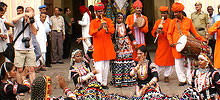
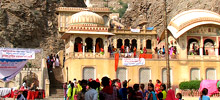
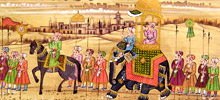
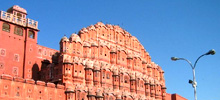
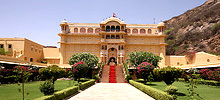
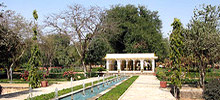


Hello Admin,
ReplyDeleteHi,
Thanks for sharing.
Our Services mentioned below,
ad agency in chennai
advertising agency in chennai
Printing in tirunelveli
Digital Marketing in chennai